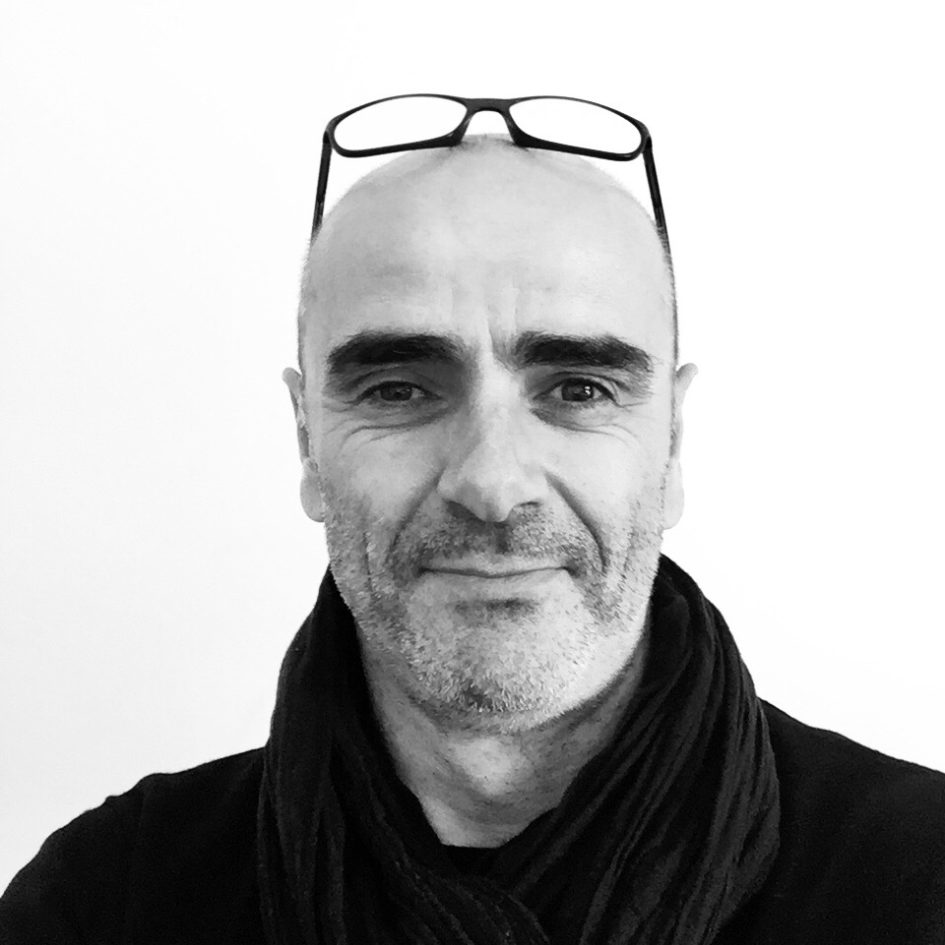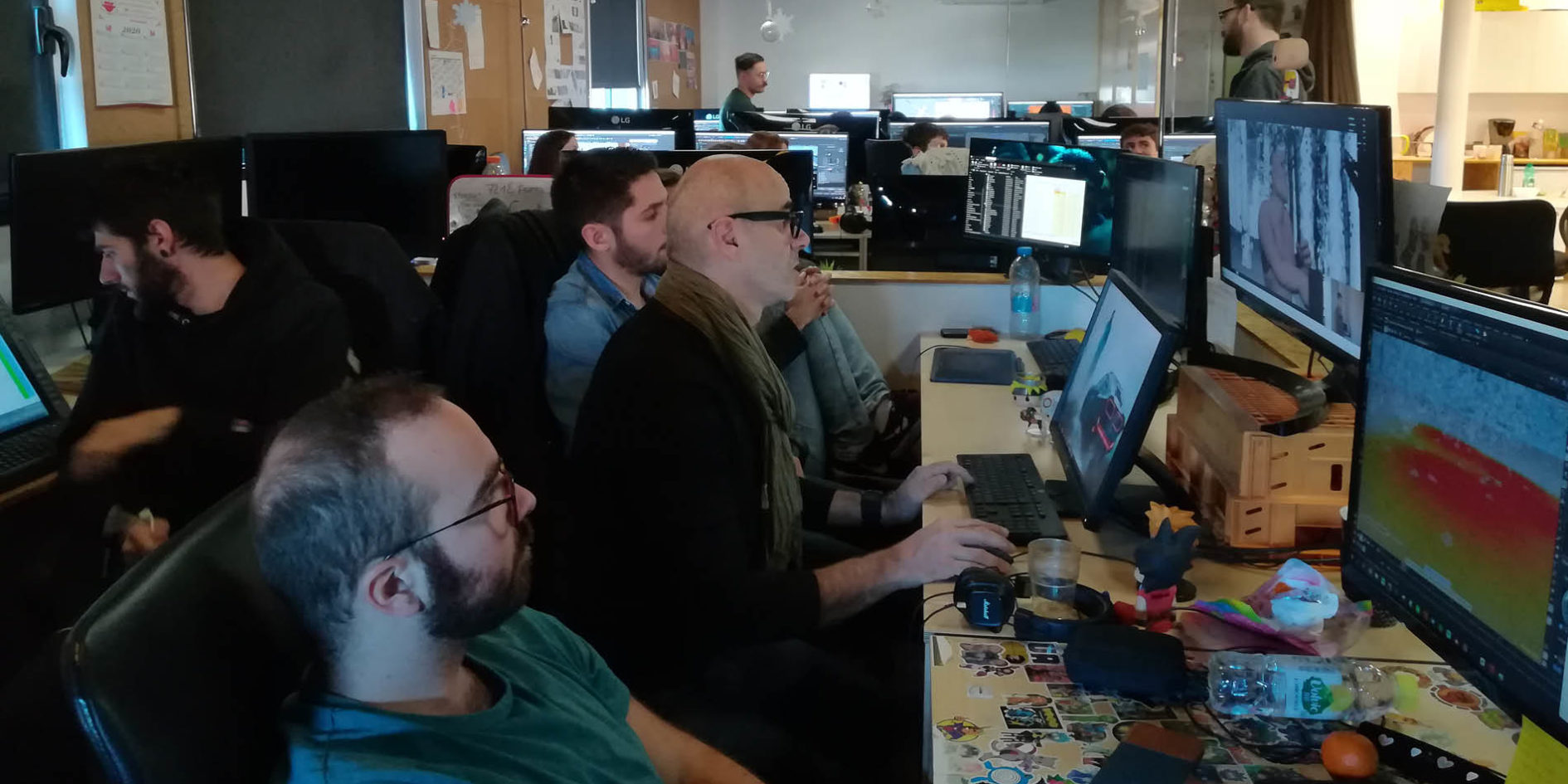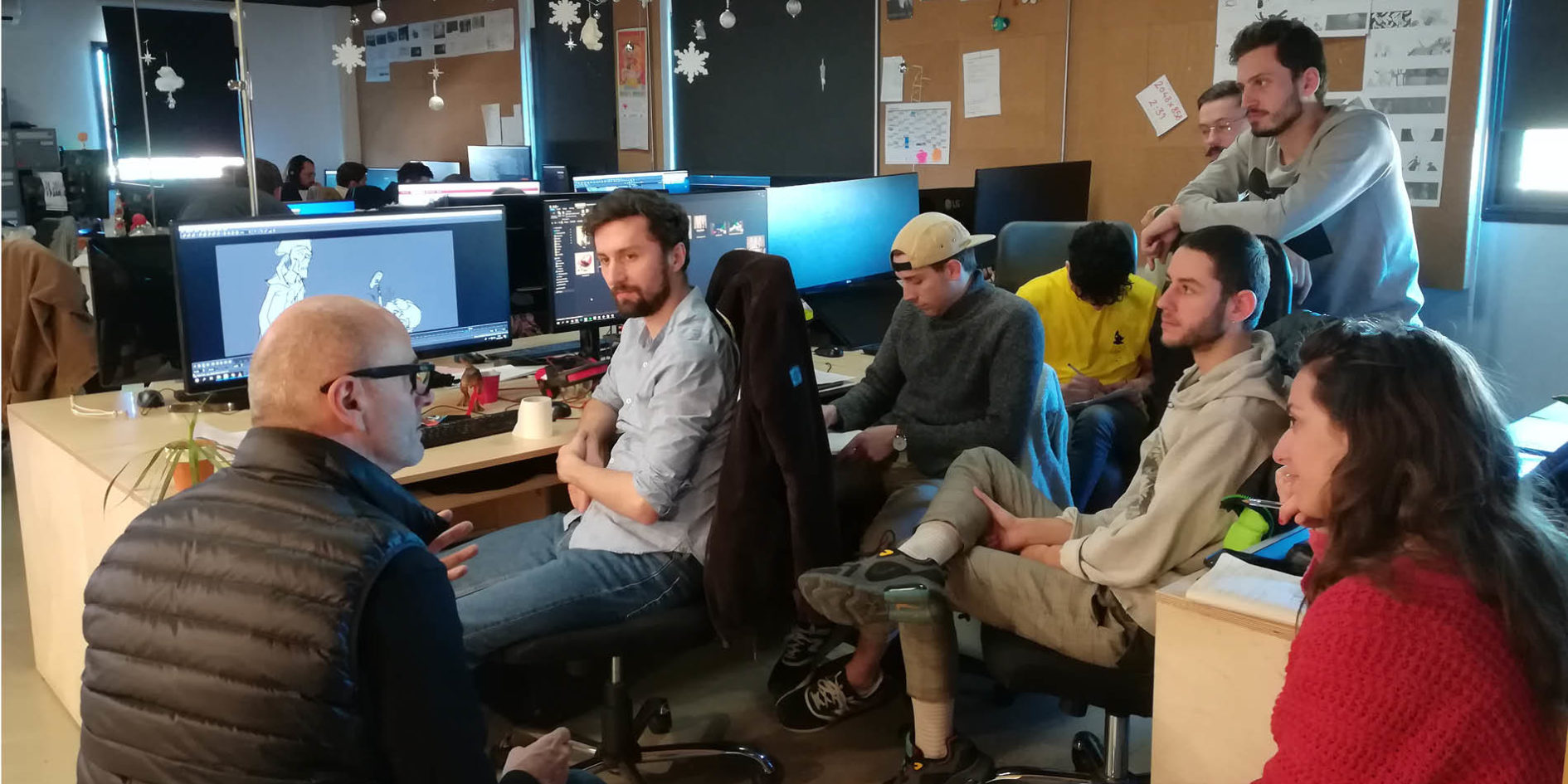
Masterclass with Lionel Pouchard, storyboard artist
Conférences . 13 May. 2020
Lionel Pouchard, storyboard artist, met for two days with the students of CG Animation & FX Master Degree in order to exchange with them about their graduation film and how to tell a story.
THE ART OF DRAWING STORIES…
This year, ESMA in Montpellier had the privilege of welcoming for the first time the speaker Lionel Pouchard, storyboard artist. For more than 25 years, he has been working in the film industry as a storyboard artist but not only as a storyboarder but also as a scriptwriter and designer and illustrator. His career has led him to contribute to many well-known feature films such as Blood Diamond, Syriana, La promesse de l’aube, Camping (1-2-3), Mesrine, l’Odyssée or by participating in the famous Braquo series. These numerous productions, both French and international, allowed him to confront himself with a variety of situations and ways of working.
Today, all this experience and accumulated knowledge is taught to students in parallel with his activity. Beyond being an expert in his field, he is above all passionate about history and how to tell it to produce the desired impact.
During two days Lionel Pouchard met the fourth year students of the CG Animation & FX Master Degree course in order to exchange with them about their graduation films. As a specialist in storytelling, or the art of storytelling, he gave the students an outside view of their films as well as an insight, from the point of view of a storyboard artist, into the art of storytelling.
It was a particularly enriching experience for the students, who came away delighted with the experience. And as many of them pointed out at the end of the msterclass, they were relieved to see that a professional like him – a story specialist – understood their messages and intentions. This reassured them a little before the big-screen projection at the September jury!
A LOOK BACK AT THESE TWO DAYS OF MEETINGS AND EXCHANGES
Lionel Pouchard confides about these two days spent in the company of students:
For me it was a privilege to be welcomed into their world! My goal was to help them, to use what they already have in order to transform a good story into an excellent one. The students have worked so hard on it that they have turned the story upside down and all that is left to do is to make adjustments, but it is precisely because of this adjustment that a story can be made stronger.
To do this, you had to extract their point of view, understand it, visualize it and try to make them ask themselves the right questions at the right time. I don’t come to judge their storyboard but really to accompany them in their story and make them understand that a storyboard is only effective when it tells the right things at the right time. Thanks to the creation of this first short film, the students discover little by little how a film is made.
My experience allows me to know directly what the students have in mind and I help them get where they want to go. Through discussion, they discover their film in a new light and better understand the underlying significance of their story. They have it all inside them but they don’t know how to express it.
The films they discover are really a good surprise. They’re films with great subject matter! The technique is at the service of a subject and it can be easy to stay in form but not in substance. At ESMA this is not the case and this can be seen by following the evolution of the films over the years. This is proof of valuable teaching.
WHAT VISION OF THE STORYBOARD ARTIST’S JOB
The storyboard artist’s job being quite unknown, we wanted to know how Lionel Pouchard looked at it:
A storyboard is first of all : “what does it tell” ? You have to use the elements, frame by frame, and manage them to tell a story. It’s about understanding the path of the eye, managing the information for each shot that will itself tell things. The hardest part is to be a good storyteller after the drawing follows.
You have to see the storyboard as a fantastic working tool that allows you to frame a film well and master its story a bit like an architect’s plan. We always work closely with the director in order to understand his expectations and the vision he has of the project.
Being a storyboarder is a technical job that implies mastering and understanding several specialties of cinema: camera movements, image composition, acting… For example, depending on the cameras used, the renderings will not be the same and this has an impact on the frame and the elements inside. It is thanks to all these elements that we can structure an image. You have to be curious and not hesitate to want to learn.
In CG animation the storyboard is a central element because it is an expensive technique. So everything must be well determined in advance. Because of its importance in this sector, the profession of storyboarder is becoming more and more popular.
PROFESSIONAL TIPS
As a concluding guide, we asked him to share a few tips with us:
One of the keys to storytelling and storyboarding is one idea at a time. The viewer must have his eye directed from one element to the other and there must be an order of reading.
Then, it is important not to give the information right away. It is necessary to sow information that, end to end, will be used to tell something, but not right away! You have to titillate the interest of the spectator, so that he tries to understand what’s going on. We must not overdo it, but bring the spectator where we want to take him.
Often, one can fear that the message is not understood and therefore add elements, but this is to the detriment of the story. You can’t tell everything in one image, it’s a logical sequence of interactions, a bit like a flipbook.
FEW WORDS ABOUT THE STORYBOARD ARTIST’S JOB
A storyboard artist’s mission is to create the storyboard of a film – short or feature film -, an advertisement, a clip… that is to say, before shooting and from the script and the scenario, to represent in a drawn way the scenes composing the project. In this way, the characters and sets, camera movements and orientation, special effects, etc. are retranscribed one shot after the other. The representation can be in color or in shades of gray.
The storyboard artist can prepare the whole film or intervene only on certain key scenes (complex or including special effects…). It also allows you to visualize what works or doesn’t work, weaknesses, narrative breaks… thus exposing the scenario in a visual way.
Beyond knowing how to handle the pencil, the storyboard artist must above all know “cinematographic grammar”, i.e. all the elements (both human and material) involved and understand a scene in its continuity. All this knowledge is necessary to obtain a quality storyboard and therefore a filmed rendering that is just as good.





